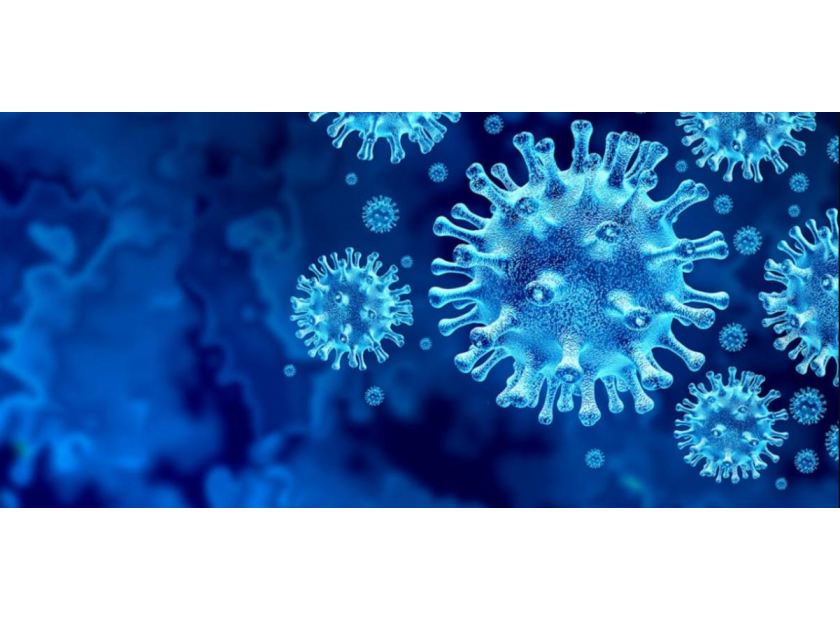SARS-CoV-2 Variants: A New Public Health Crisis?
Many states are relaxing restrictions amid both vaccination efforts and slowly decreasing case numbers, however, scientists warn that this pandemic is far from over. Researchers are working to gather more information about the SARS CoV-2 and its variants while the virus continues to mutate.
So, what are variants?
Complex recombination across genetically similar viruses plays an important role in the evolution of coronaviruses both within human and animal hosts.(1) RNA viruses are more likely to accrue mutations compared with DNA viruses .(2) However, due to a novel exoribonuclease (ExoN), SARS-CoV-2 accumulates mutations at about half the rate of the influenza virus and one-fourth the rate of HIV.(2, 3)

Due to the redundancy of the genetic code, many mutations are “silent” and will not alter a virus’s ability to spread or cause disease. However, changes in amino acids can alter a protein's structure and charge. Altered proteins are more likely to impair virulence rather than improve it. However, in rare cases, a small change in the amino acid structure can increase virulence. When detected clinically, these strains with potentially beneficial mutations are dubbed ‘variants.’
The CDC estimates the B.1.1.7 variant first emerged in the UK during September 2020.(4) As of February 25th, 2021, this variant has been reported in over 200 countries, with the US reporting 2,102 cases across 45 states.(5, 6) B.1.1.7 comprises multiple mutations that make it approximately 50% more transmissible.(7, 8) The N501Y mutation occurs in the receptor binding domain (RBD) of the spike protein (S protein) at position 501.(2, 4) The 69/70 deletion and P681H and also affect the S protein making the variant better able to bind to human ACE2 receptors.(4, 7, 8)
Variant B.1.351, first identified in Nelson Mandela Bay, South Africa, has multiple mutations in the spike protein, but does not contain the deletion at 69/70.(4) As of February 25th, 2021 it has been reported in over 30 countries with the United States reporting 49 cases across ten states.(5, 6) This variant has the RBD spike protein mutations N501Y and E484K. In addition to increased transmissibility, E484K may affect recognition by antibodies allowing the virus to evade the immune system.(9)
Though these variants receive most news coverage, they are far from the only variants out there. In January 2021, a variant known as P.1 was first identified in travelers from Brazil and was subsequently detected in the US a month later.(10, 11) CAL.20C, the variant first detected in Southern California in late 2020, has similar RBD mutations. This variant is responsible for 44% of new infections in Southern California and is circulating around the globe.(12)

The vaccines developed by Pfizer-BioNTech and Moderna appear to be effective against the UK B.1.1.7 variant. However they showed a slight decrease in effectiveness against the South African B.1.351 was observed.(2) Moderna conducted a study using sera from immunized patients and B.1.351 like pseudoviruses. These showed 2.7 and 6.4-fold reductions in neutralization, respectively.(13) Despite this reduced activity, the B.1.351 was fully neutralized.(2, 13) Both companies are working to develop a booster shot.(2, 14)
Numbers are the name of the game. More infections mean more replications and higher chances of beneficial (for the virus) mutations occurring. Essentially, each infected person is a chance for SARS-CoV-2 to become more effective at causing disease in humans. Even with a vaccination, individuals may be able to spread the virus.(15)
As restrictions lift, keeping cases low will be integral to preventing new variants and causing further public health issues.
References
- https://advances.sciencemag.org/content/6/27/eabb9153
- https://asm.org/Articles/2021/February/SARS-CoV-2-Variants-vs-Vaccines
- https://www.nature.com/articles/d41586-020-02544-6
- https://www.cdc.gov/coronavirus/2019-ncov/more/science-and-research/scientific-brief-emerging-variants.html
- https://www.cdc.gov/coronavirus/2019-ncov/transmission/variant-cases.html
- https://www.cdc.gov/coronavirus/2019-ncov/cases-updates/variant-surveillance/global-variant-map.html
- https://www.biorxiv.org/content/10.1101/2020.11.19.389916v1
- https://www.biorxiv.org/content/10.1101/2020.12.14.422555v4
- https://www.scientificamerican.com/article/the-most-worrying-mutations-in-five-emerging-coronavirus-variants/
- https://www.niid.go.jp/niid/en/2019-ncov-e/10108-covid19-33-en.html
- https://www.health.state.mn.us/news/pressrel/2021/covid012521.html#:~:text=The%20Minnesota%20Department%20of%20Health,recent%20travel%20history%20to%20Brazil.&text=The%20variant%20was%20found%20through%20the%20MDH's%20variant%20surveillance%20program.
- https://www.cidrap.umn.edu/news-perspective/2021/02/new-covid-variant-5-mutations-identified-california
- https://investors.modernatx.com/news-releases/news-release-details/moderna-covid-19-vaccine-retains-neutralizing-activity-against
- https://www.statnews.com/2021/02/25/is-more-simply-better-why-pfizer-thinks-a-booster-of-its-covid-vaccine-might-work-against-new-variants/
- https://www.cdc.gov/coronavirus/2019-ncov/vaccines/keythingstoknow.html#:~:text=It%20typically%20takes%20a%20few,time%20to%20provide%20protection.







